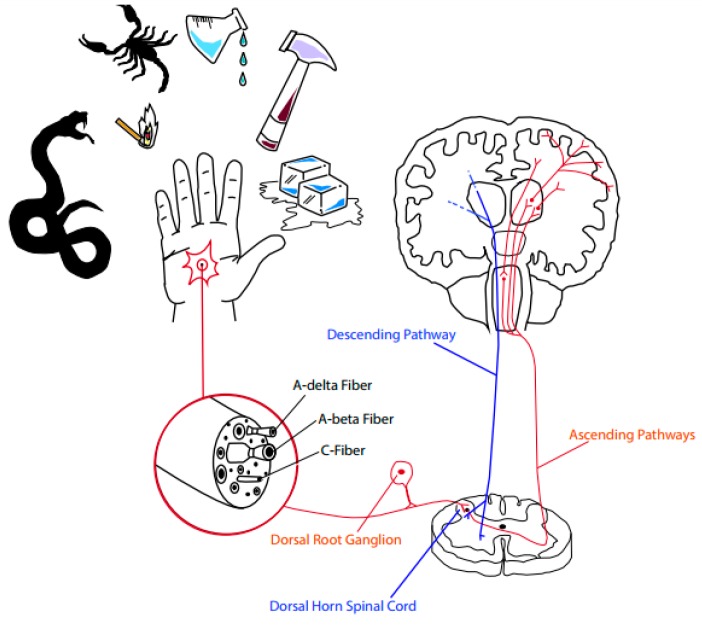Figure 2.
A schematic overview of pain pathways. Noxious stimuli, such as high temperatures, injury-related chemicals, extreme mechanical pressures and venoms, are detected by nociceptors. The nociceptors are pseudounipolar neurons whose cell bodies (soma) are located in the dorsal root ganglia. They bifurcate, sending a peripheral axon to the skin, and other organs, and an axon to the central nerve system (CNS). C-fibers are unmyelinated small diameter axons with projections to superficial laminae I and II of the dorsal horn of the spinal cord. Aδ-fiber nociceptors are thinly myelinated axons with projections to superficial lamina I as well as to the deeper dorsal horn (lamina V). From the spinal cord the information proceeds to the brainstem and reaches the cerebral cortex, where the perception of pain occurs (ascending pathways-red). The descending pain modulatory circuits decrease the nociceptive input in the central nervous system by releasing neurotransmitters that can exert an inhibitory action (ascending pathways-blue). Illustration: Larissa Foronda.

